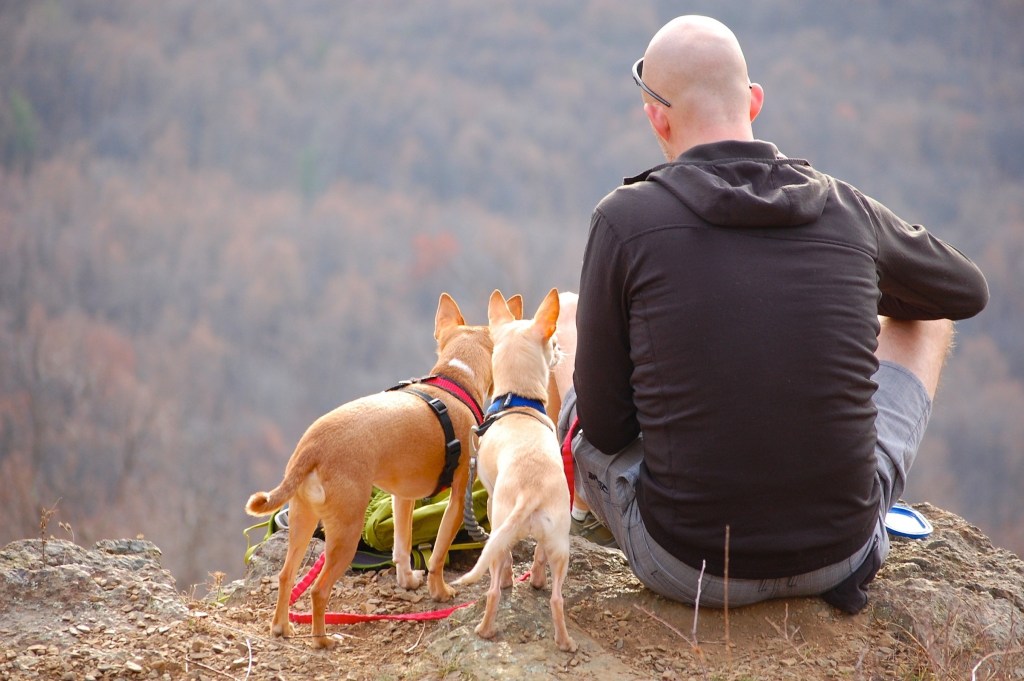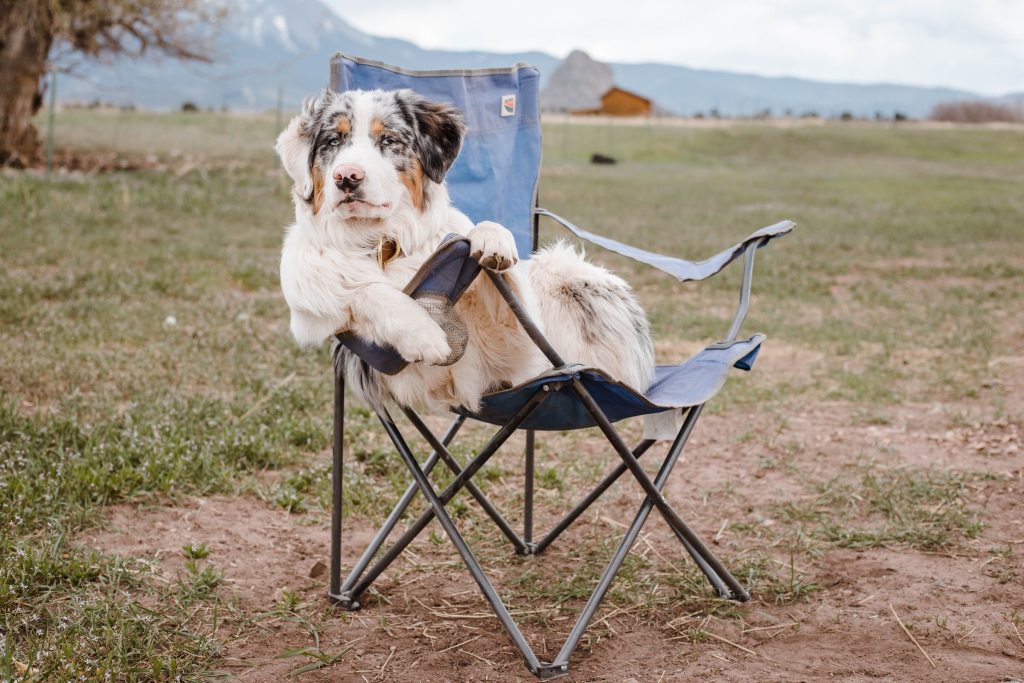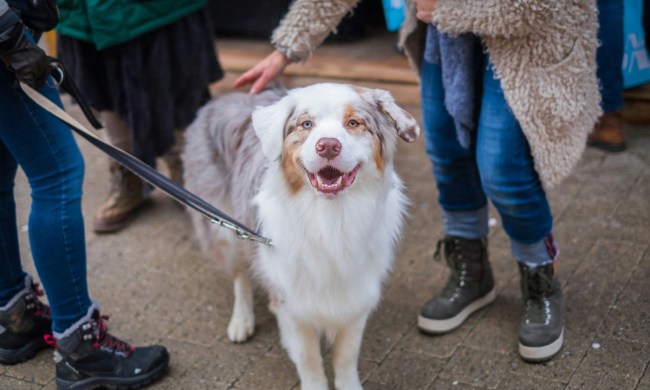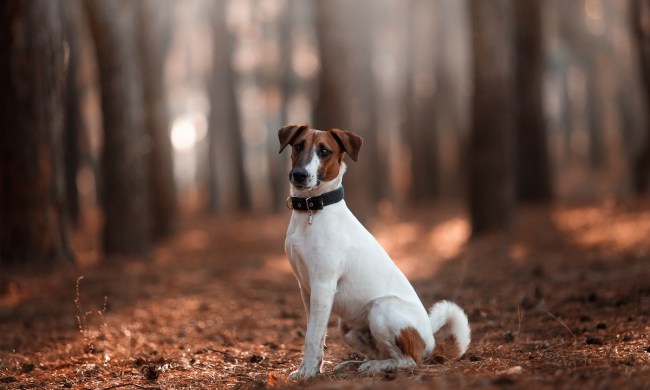Packing up spontaneously and hitting the road with your four-legged friend might sound like a blast, but camping with your dog requires some planning, including shopping for the right hiking gear. Not only does this ensure you’ll have the best time possible, but it keeps both you and your best buddy feeling secure and content. Camping safety with dogs is essential.
Packing, mapping, and checking in with your vet are just a few of the to-dos you’ll want to check off the list. Although your tasks will differ depending on your destination and the length of the trip, you can be sure these seven things will be necessary. Here’s what you should keep in mind as you plan a camping trip with your dog.
1. Pack the right gear and sustenance
Packing lists for people on camping trips aren’t so different from what you might expect to bring for a dog. Essentials like food and water (make sure to bring more than you need) are important for you both. For longer trips, it’s smart to know where you’ll be able to restock while you’re out and about. Don’t forget treats to keep your pup motivated and ready to learn and listen!
The gear your dog has is especially important while you’re camping since it’s literally his safety line should anything go amiss. Make sure your pup is properly fitted in his harness before you venture out, and double-check any tags that your dog normally wears. There are special harnesses and leashes to make certain activities — like swimming or hiking — safe and fun. Dog life jackets, for example, are a helpful investment to make if you have a water baby at home.

2. Schedule a vet visit before you go
Before you embark on your journey, have your dog undergo a checkup so that he’s ready to go, too. Your vet will make sure that your furry friend’s vaccinations, flea/tick treatments, and blood work are all up to date. They can double-check for a microchip that will help you locate your dog should you get separated. It’s a decent idea to have your dog groomed before he goes. Shorter hair is easier to maintain, cooler on the body, and more difficult for fleas and ticks to latch onto.
3. Read up on pet and leash requirements
Although most campsites love animals as much as we at PawTracks do, confirming the rules and regulations will ensure a problem-free trip. Leash laws vary from place to place, though you can most likely count on leashes being required at formal campgrounds. Keep in mind that further regulations, such as a ban on retractable leashes or a maximum leash length, may be in effect as well.
KOA Campgrounds notes that some places also have a rule about barking. Although campers understand animals’ natural tendencies, there is a possibility of being asked to leave if your dog is particularly noisy.
4. Know where you’re going
It may sound obvious, but knowing the roads, as well as the plan, saves you time, stress, and money. You’ll have plenty of options for potty breaks, stretching your legs, and stocking up on supplies. Plus, you won’t have to rush! You’ll have much greater freedom to explore in an area you’re at least somewhat familiar with, and you can’t count on your dog to lead you back to camp by instinct, after all.

5. Make sure your pet is visible
One more thing your dog’s accessories should do is ensure that he stays visible no matter where he is. This may mean purchasing a reflective harness or attaching reflective tape to your pup’s gear, but safety beats style any day. Collar lights are also an option and are even more visible from a distance.
If your dog has fur that may blend in with the landscape around you, consider dressing him in bright, neon colors. Whether “dressing him” means just a collar or an all-out outfit is totally up to you (and your dog), but it’s never a bad idea for him to stand out. Do keep in mind that he will stand out in anyone’s vision, though, including a potential predator’s. This is just one reason why you should never leave your dog unattended while you’re camping.
6. Review canine first aid
No one wants to think about it, but accidents do happen while camping. Just as you would want to know CPR and first aid for people, you should know what to do if your pup takes a tumble or has an allergic reaction. Your vet can help guide you toward the best allergy relief, as well as resources for learning canine CPR, Heimlich maneuver, and more. Don’t forget your canine first aid kit!
7. Take a picture of your dog
Another unexpected tactic to take advantage of is right on your phone. Should your fur baby ever go missing, have his photo ready to show around. Microchips and collar IDs are super helpful, too, but you might find your dog within minutes if another camper recognizes him quickly.
When planning a camping trip, you really can’t be too careful. Conditions can change quickly, and Mother Nature isn’t the gentlest lady in the world. Once you’re all packed and prepared, though, you can enjoy your trip knowing you’ve got everything you need … including your best buddy by your side.



